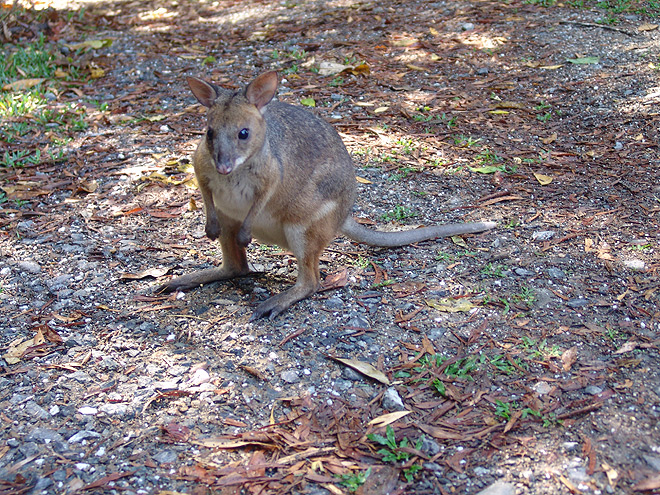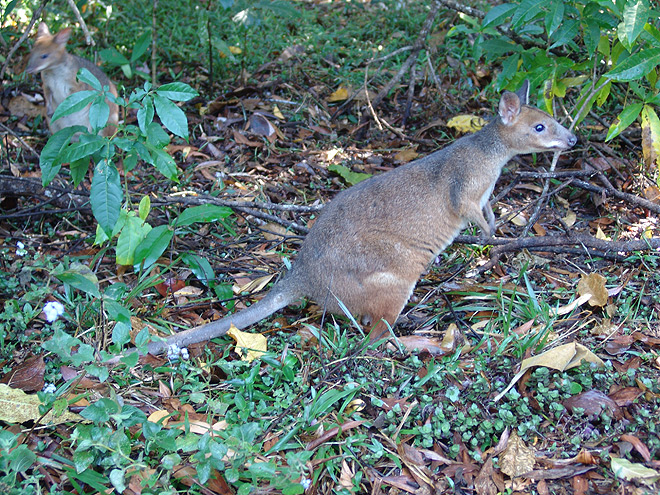A one-of-a-kind rainforest wallaby with rust coloured limbs, the Red-legged Pademelon is a spirited creature that communicates via hard thumps in the ground. The males also make a harsh, rasping sound after romantic rejection, and a soft clucking sound during sensual success.

Found in the wet forests of eastern Australia and New Guinea, this colourful bouncer has a short, thick tail, and stands at about 2 ½ feet tall. Its primary food is fallen leaves, but they also feed on fruit, berries, tree bark and cicadas. Their penchant for the region’s flora can sometimes stifle forest regeneration.
Interestingly, the Red-legged Pademelon feeds under the control of one dominant member, who controls the feeding area and determines the distance apart at which food must be taken. This feeding is done deep in the rainforest, during late afternoon, evening and early morning, at 30 – 50 metres distance from each other.

The wallaby is most active from late afternoon until early the next morning, at which time they retreat to their resting places for much of the day. When resting, this rusty coloured animal will sit on its tail and lean back against a rock. When it’s time to sleep it will lean forward, resting its head on its tail or on the ground.
The Red-legged Pademelon also has an extremely efficient reproductive system, as the female can become pregnant shortly after giving birth. If she becomes pregnant whilst carrying a baby in her pouch, the new embryo is placed on pause, in a type of suspended animation. Here it will remain until the older sibling leaves the pouch.
Even when leaving the mother’s pouch, a pademelon will return to suckle on some milk. Here it only uses the teat it fed on during its time in care, allowing the mother to supply two different types of milk, the other more appropriate to the newborn. This is known as embryonic diapause, and allows for immediate replacement of an offspring in the advent of a juvenile’s death.
The Red-legged Pademelon has suffered a reduction in numbers, as rainforest clearing has reduced their habitat. However, its strong family network and speed and agility have protected it from feral animals, while making sure their numbers have remained steady and the ominous ‘endangered’ title has stayed at a safe distance.
